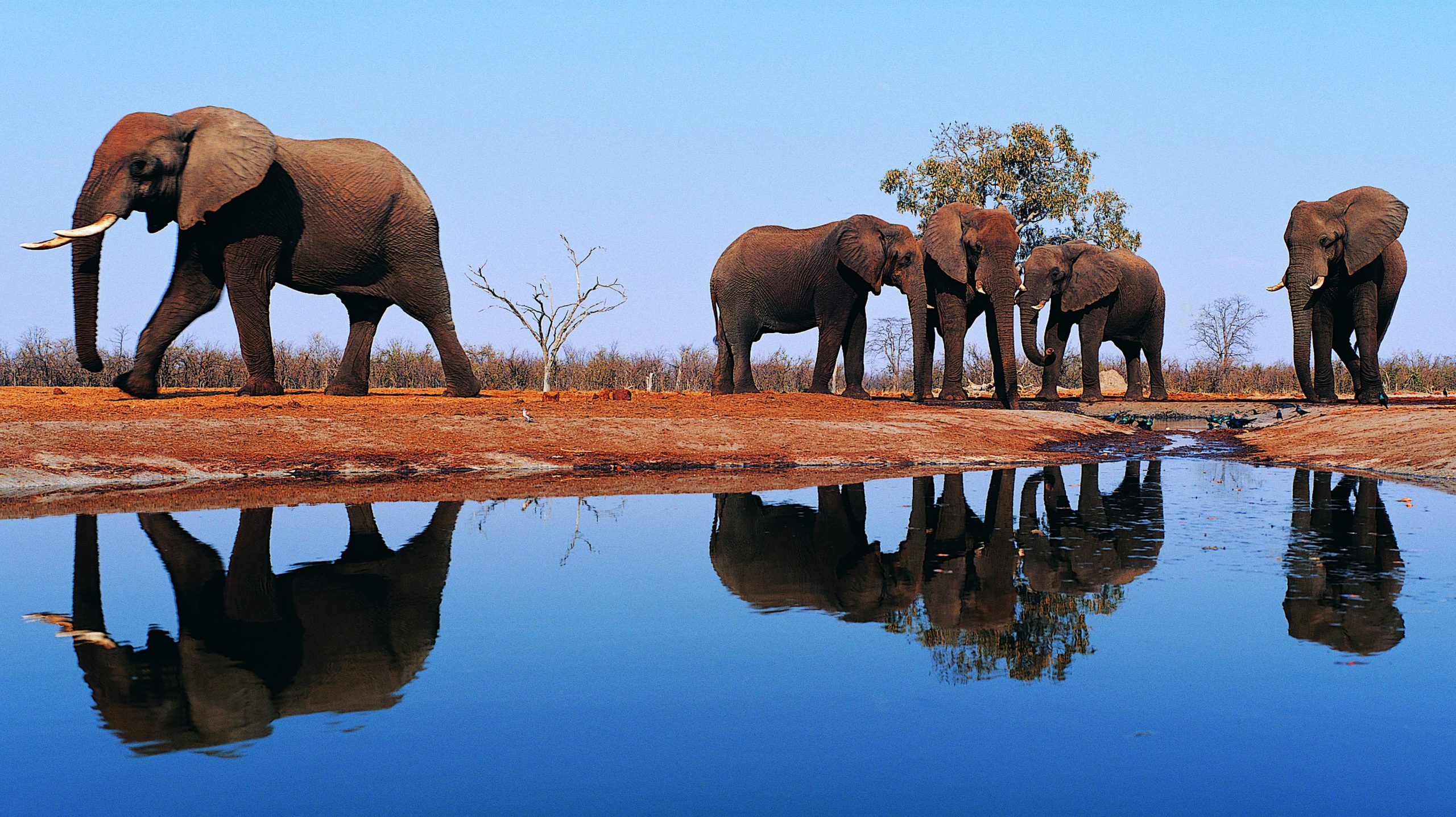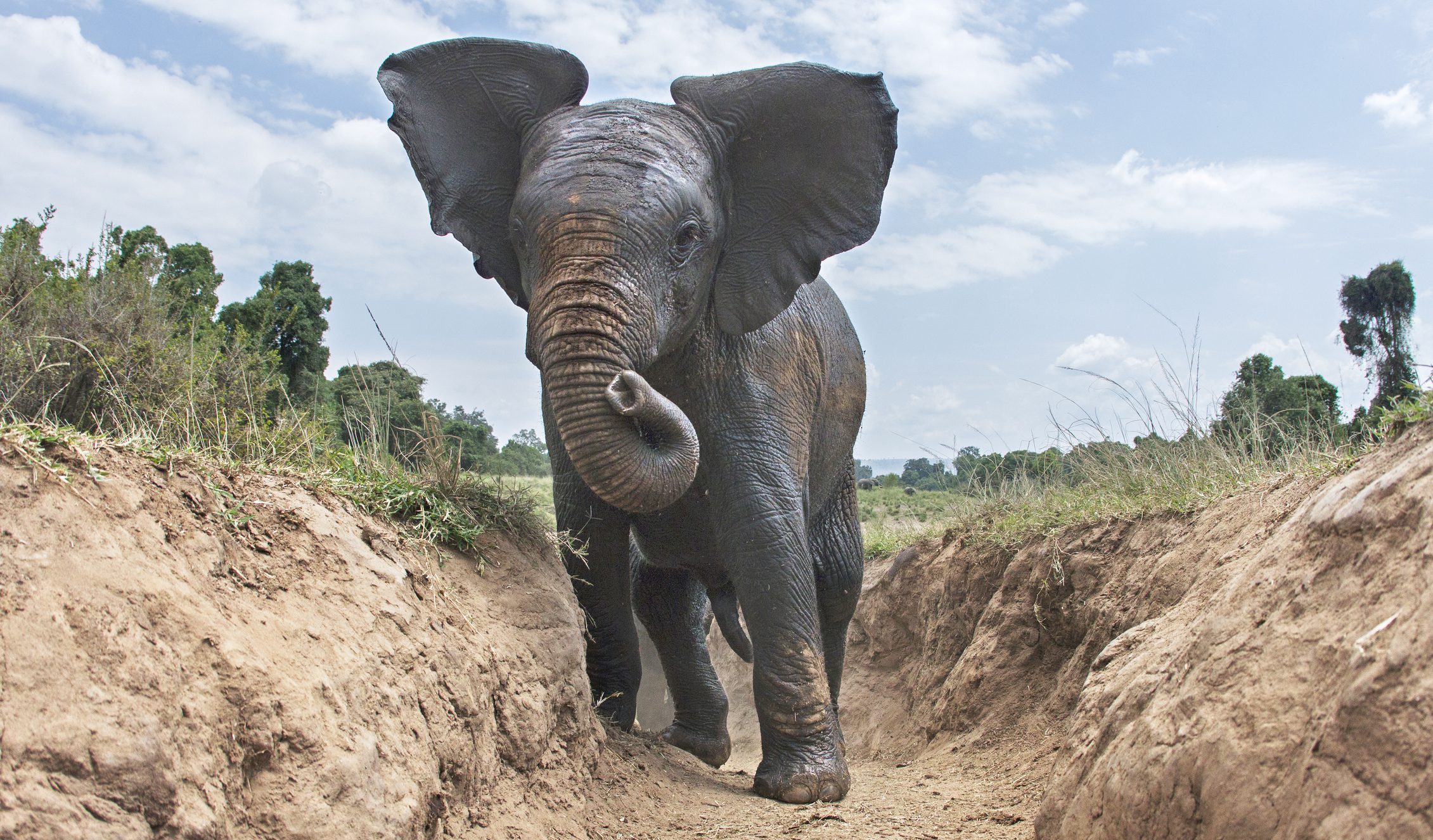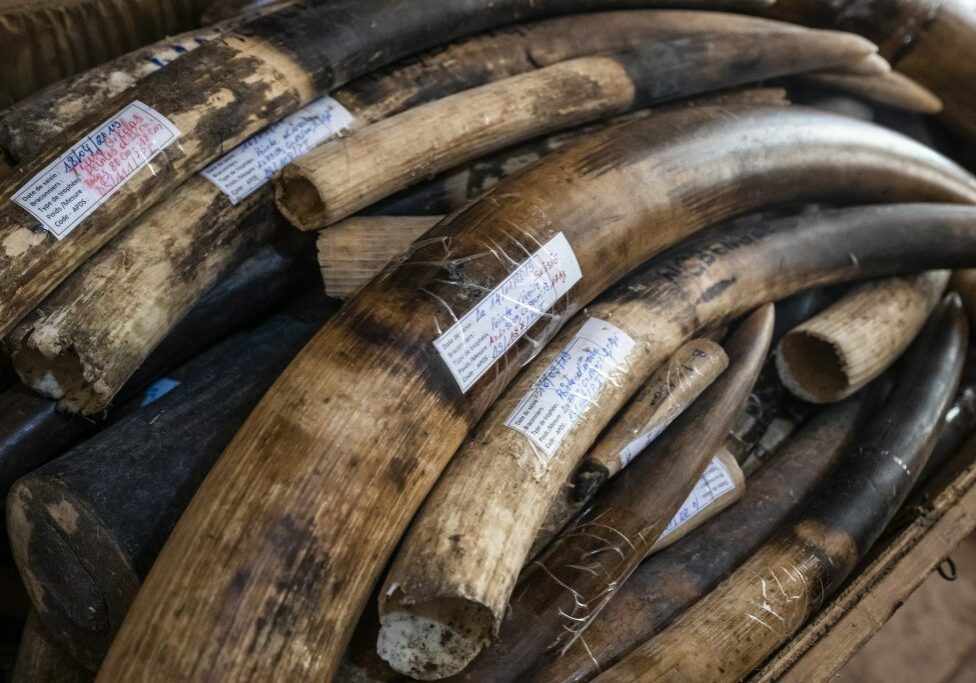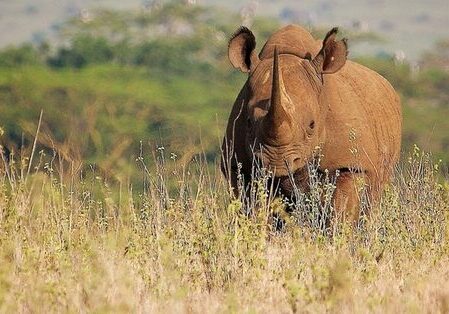Early morning on the edge of Kenya’s Maasai Mara National Reserve. The stench of death hangs over the long grass. In a trampled, blood-stained clearing lies the body of an elephant. Already, her great flank is whitewashed with vulture droppings: nature is taking its course.
Yet this is no natural death: the bloody mess, where the tusks have been brutally hacked from her face, reveals the grim truth. This is the work of ivory poachers.
Worse, the tragedy does not end there. Beside the fallen giant stands her young calf, still very much alive. It’s been three days since the attack, but the youngster has not left its mother’s side. Terrified and weak with hunger, it waves a tiny trunk towards the wheeling vultures and trumpets. But it’s alone. The traumatised herd has scattered. A whoop announces the arrival of the first hyenas.
“It’s a horrific experience,” explains Drew McVey, WWF’s wildlife crime expert in east Africa. He’s come across such scenes more times than he cares to remember. “It breaks your heart.”
He describes how each dead elephant is a body blow to patrol teams. “Ultimately, we all hold ourselves accountable,” he says. “You can’t help feeling you’ve somehow failed.” Attacks usually happen at dusk, the poachers knowing that the darkness will help them make their escape. “You hear that shot,” says Drew, “and you know you’ve already lost.”

© GETTY IMAGES
Elephant poaching takes a heavy toll on Drew and the dedicated ranger team. And what makes things harder is knowing how an attack affects those that survive. Elephants are complex social animals. The loss of any member of the herd has emotional repercussions for its companions. Ties are strong – not just between cow and calf, but between siblings and even across generations.
Elephants are known to grieve for their dead, standing guard over carcasses for days, and even returning months later to touch the scattered bones of a long-dead companion.
Drew has witnessed the profound impact of such attacks: how elephants that were once seemingly confident and happy become silent, hiding away in thickets and emerging only after dark. He has watched their demeanour change; seen the secretions flowing from the stress glands below their temples. He calls it “the closest thing to elephant tears”.
Friend or foe?
He also credits elephants with great intelligence. “You get the feeling that they know when people are here to help them,” he says, having observed how elephants differentiate between humans they see as a threat and those who offer them protection. In areas beset by poaching, he has watched terrified elephants move closer to ranger camps at night.
And he tells of a young female who turned up at a wildlife orphanage in Tsavo National Park with a spear in her flank. Her appearance alarmed the staff – until they recognised her as an orphan they had reared and released many years before. In need of their help, she had returned. The staff were able to remove the spear and dress her wound.
Poaching also has other ramifications for the elephants that survive. Within their close-knit communities, the older animals – in particular, the matriarchal females – serve as repositories of wisdom and experience. They know, for instance, the routes to water in a drought, the safest places to cross a river and the areas where poachers operate.
They also provide the social discipline and direction that binds elephant society together. When such elephants are killed, herds often splinter. Younger elephants become lost, both literally and emotionally.
Drew recalls how in the early days of elephant translocation in South Africa, when young elephants were moved to new parks without older family members to keep them in line, they ran riot, attacking vehicles, rhinos and even each other.
Today, Africa’s elephants face many challenges including poaching for their ivory tusks, habitat loss, conflict with humans and climate change.
The statistics make grim reading: around 17,000 African elephants are killed each year for their ivory – that’s an average of 47 a day; and Tanzania’s Selous Game Reserve, which once had the largest elephant population in east Africa, lost nearly 80% of its elephants between 2007 and 2014.

© GETTY IMAGES
For Drew and the rangers who face the grisly, day-to-day reality of this slaughter, despondency would be easy. But it’s when feelings run high that a cool head is essential. “For our teams, it’s important to manage our emotions,” Drew stresses.
He describes that nightmare scenario of finding a poached elephant when on patrol. “You want to race up to the carcass to work out what’s going on,” he says. “But that’s the worst thing you can do, because then you destroy evidence. If it’s a fresh carcass you have to be careful the poachers haven’t heard you coming and aren’t sitting in the bushes, waiting for you.”
The poachers’ weapons of choice are also changing – from noisy firearms to more discreet poisoned spears. Rangers can now identify individual poachers by their modus operandi: one ruthless individual, for example, fires poison-tipped arrows into an elephant’s kidneys.
Illegal snaring is also on the increase: once largely practised by local people hoping to capture small game for the pot, this brutal practice has now taken on a more organised, commercial dimension, with heavier wire snares designed for animals as large as giraffes, rhinos and even elephants. Drew describes one young cow elephant in the Mara, known as ‘Shorty’, who lost the lower third of her trunk to a snare.
Staying one step ahead
As the conflict escalates, we’re providing vital help and resources to Drew, the Kenya Wildlife Service and all our other elephant conservation partners. “Poachers are adapting the whole time,” says Drew, explaining how each new threat requires a new response. With your support, we’ve pioneered novel technology that gives rangers an upper hand.
The introduction of thermal imaging cameras, for instance, is now helping our teams track down poachers moving after dark through the Maasai Mara and to monitor anybody crossing illegally into Lake Nakuru National Park. With your help, we’ve also fitted 12 elephants in the Mara with GPS collars so the rangers can keep an even closer eye on the herds and assess how they respond to threats.
Meanwhile Drew and his team are working closely with local communities. “We need to make sure that people who live with elephants every day see their presence as beneficial,” he insists. Elephants can cause real harm by raiding crops, after all, and even pose a threat to human life.
“If communities don’t see any benefits, poachers can be regarded as being like Robin Hood,” Drew explains, describing how ivory gangs garner local support by dressing up their illegal activities as a way of ridding the community of a problem.
Addressing such issues comes down to collaboration. With your support, we’re showing people new ways of reducing conflict with elephants – such as keeping bees as a deterrent – and explaining how elephants can bring benefits such as tourism. Through our GPS-collaring programme, we can also alert communities to the approach of potential crop-raiding elephants, allowing them to take preventative measures in good time.
A global challenge
Make no mistake, the challenges in Kenya are huge. There are at least 65,000 illegal guns at large in the country, each one of which represents a potential poacher. And vital conservation resources are thin on the ground. “Most protected area authorities do an amazing job with what they’ve got,” Drew says. “But they don’t have the resources they need.” So we’ve stepped in to help out. Thanks to you, we’re supporting anti-poaching teams with training and equipment, and helping governments to monitor and protect their elephant populations.
The legal side also presents challenges, with convictions often failing due to the inexperience of arresting officers. “We have to be more organised,” says Drew. “People don’t plead guilty. They look for weaknesses in the system and get off on technicalities.”
So we’re working through TRAFFIC, the only global wildlife trade monitoring network, to strengthen law enforcement from the ground up, training rangers, customs officers and prosecutors to help bring more poachers and traffickers to justice.
Behind all these challenges there lies a much bigger picture: one of a huge, illegal industry, involving a multi billion-dollar international market, ruthless crime syndicates, corrupt authorities, and a network of procurement and storage facilities that stretches across Africa and around the world. “We have to scale up our efforts,” insists Drew.
Of course, rangers have their hands full trying to prevent poaching in the field. That’s why we’re tackling what goes on beyond the park boundaries – helping ensure that information is shared across international borders to crack down on illegal trade routes, and to strengthen penalties to make sure they reflect the serious nature of the crime. In 2016, with support from our lobbying, a man in Kenya was sentenced to 20 years in jail and fined over £155,000 following a seizure of 228 elephant tusks and 74 pieces of ivory.
Closing down the ivory market
Ultimately, stemming this tide of slaughter requires international solutions. So we’re stepping up our work with the Convention on International Trade in Endangered Species of Wild Fauna and Flora to ensure that the convention’s agreements are enforced around the world.
We’ve been engaging directly with the biggest markets for illegal wildlife products – including Thailand, China and Vietnam – and in 2017, our efforts contributed to China, the UK and others announcing new bans on domestic trade in ivory products. Meanwhile we continue to work with consumers to change their attitudes towards buying ivory.
So how does the future look for those working on the ground? Despite the horrors he’s witnessed, Drew is positive. “This isn’t the first time elephants have been under pressure, and we’ve come through it before,” he points out. “If we can provide them with a safe and healthy ecosystem,” he says, “they’ll find a way to survive.”
Any doubts about the resilience of elephants are answered by the story of Shorty, who survived losing part of her trunk. “She’s a symbol of hope,” says Drew. “Elephants are amazingly resilient.”
And what about those bad days, when everything feels hopeless? Drew has a simple solution for keeping his spirits up. “I spend some quiet time with the elephants,” he says. When the big picture looks bleak, it helps to focus on all the positive things we’ve achieved for elephants, thanks to your support. Without you, the situation would be so much worse. “I look at elephants as individuals,” says Drew. “And it always gives me hope.”
• This is an edited version of an article that originally appeared in WWF Action magazine in 2018.

